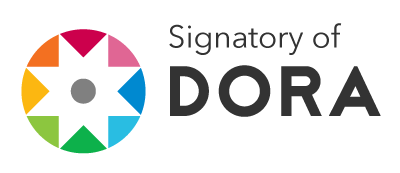Insight to the Relationship Between the Literary Subgenres and the Object Oriented Programming
DOI:
https://doi.org/10.37467/gka-revedu.v2.604Keywords:
Object-Oriented Software Engineering, Literary Subgenres, UMLAbstract
As the title suggests, this article exposes a vision to the relationship between a human expression so fascinating and mature as literature, evident in works of different genres, and other attractant also more recent hatching as computer science, manifested in themes related with the object-oriented programming (OOP). To establish the relationship, presented two overviews, the first related to the literary genres and the second with the Unified Modeling Language (UML), which are taken as a starting point to establish linkages among the fables, the asides of novel and literary works in general, with modeling of software expressed in use case diagrams, classes, objects, states, sequence and activities, all of the UML. In this way, arise new teaching strategies for the understanding of design-oriented objects through modeling of literary works.
Downloads
Global Statistics ℹ️
|
567
Views
|
463
Downloads
|
|
1030
Total
|
|
References
Botero, R., Castro, C., Taborda, G., Maya, J., Valencia, M. (2009). Lógica y programación orientada a objetos: un enfoque basado en problemas. Grupo GIISTA. Tecnológico de Antioquia Institución Universitaria, Medellín.
Breiter, A., Fey, G., Drechsler, R. (2005). “Project-Based Learning in Student Teams in Computer Science Education.” Facta Universitatis – Series: Electronics and Energetis 18(2): 165-180. DOI: https://doi.org/10.2298/FUEE0502165B
Carroll, L. (1984). A través del espejo y lo que Alicia encontró allí . Madrid: Ediciones Generales Anaya.
Cerezo, M. (1995). “Aristóteles y la teoría del género literario”. Revista Faventia 17(2): 33-34.
Cheong, F. (2008). “Using a Problem-Based Learning Approach to Teach an Intelligent Systems Course.” Journal of Information Technology Education 7. DOI: https://doi.org/10.28945/178
De Cervantes, M. (1980). El Ingenioso Hidalgo Don Quijote de la Mancha . Espasa - Calpe /Afanias, Madrid.
Guerrero, D., Trefftz, H., Anaya, R. (2009). “Juegos en la enseñanza de la ingeniería de software”. Revista Tecno Lógicas , n° 22, Instituto Tecnológico Metropolitano. DOI: https://doi.org/10.22430/22565337.228
Hernández, A. (2011). “Breviario sobre la teoría de los géneros literarios”. Revista Luthor 1(4).
Jordà, V., Català, X. (2009). Portal Proverbia. Autores/Wilde, Oscar. Novixar. En línea: http://www.proverbia.net/citasautor.asp?autor=1058
Labra, J. E. et al. (2006). “Una Experiencia de aprendizaje basado en proyectos utilizando herramientas colaborativas de desarrollo de software libre”. XII Jornadas de Enseñanza universitaria de la Informática, JENUI 2006.
Loyola Marymount University. An overview of UML. Recuperado de: http://cs.lmu.edu/~ray/
notes/umloverview/ Fecha consulta: 2 de mayo de 2013.
Rumbaugh, J., Jacobson, I., Booch, G. (1999). The Unified Modeling Language Reference Manual . 2nd edition. Addison- Wesley.
Santander, M.L. (2001). Las Mejores Fábulas. Antología . Chile: Pehuén Editores.
Sommerville, I. (2011). Software Engineering . 9th edition. Addison- Wesley.
Villalobos, J.A., Casallas, R. (2006). Fundamentos de programación. Aprendizaje activo basado en casos. Prentice Hall.
Downloads
Published
How to Cite
Issue
Section
License
Those authors who publish in this journal accept the following terms:
-
Authors retain copyright.
-
Authors transfer to the journal the right of first publication. The journal also owns the publishing rights.
-
All published contents are governed by an Attribution-NoDerivatives 4.0 International License.
Access the informative version and legal text of the license. By virtue of this, third parties are allowed to use what is published as long as they mention the authorship of the work and the first publication in this journal. If you transform the material, you may not distribute the modified work. -
Authors may make other independent and additional contractual arrangements for non-exclusive distribution of the version of the article published in this journal (e.g., inclusion in an institutional repository or publication in a book) as long as they clearly indicate that the work was first published in this journal.
- Authors are allowed and recommended to publish their work on the Internet (for example on institutional and personal websites), following the publication of, and referencing the journal, as this could lead to constructive exchanges and a more extensive and quick circulation of published works (see The Effect of Open Access).













